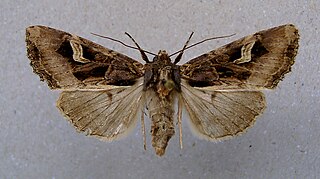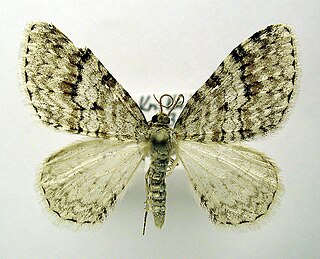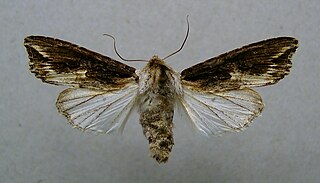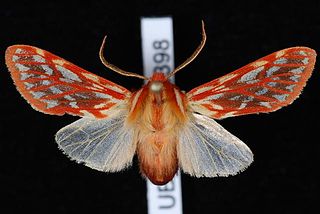| Ectypia clio | |
|---|---|
| Scientific classification | |
| Kingdom: | Animalia |
| Clade: | Euarthropoda |
| Class: | Insecta |
| Order: | Lepidoptera |
| Superfamily: | Noctuoidea |
| Family: | Erebidae |
| Genus: | Ectypia |
| Species: | E. clio |
| Binomial name | |
| Ectypia clio (Packard, 1864) [1] | |
| Synonyms | |
| |
Ectypia clio, the Clio moth or Clio tiger moth, is a moth of the family Erebidae. It was described by Packard in 1864. It is found in California and from south-western to western Nebraska and Texas. It is also found in Arizona, Utah, New Mexico and Colorado. The habitat consists of lowland areas, where it is found along creeks and rivers and in agricultural and urban areas. [2]

Moths comprise a group of insects related to butterflies, belonging to the order Lepidoptera. Most lepidopterans are moths, and there are thought to be approximately 160,000 species of moth, many of which have yet to be described. Most species of moth are nocturnal, but there are also crepuscular and diurnal species.

The Erebidae are a family of moths in the superfamily Noctuoidea. The family is among the largest families of moths by species count and contains a wide variety of well-known macromoth groups. The family includes the underwings (Catocala); litter moths (Herminiinae); tiger, lichen, and wasp moths (Arctiinae); tussock moths (Lymantriinae), including the arctic woolly bear moth ; piercing moths ; micronoctuoid moths (Micronoctuini); snout moths (Hypeninae); and zales, though many of these common names can also refer to moths outside the Erebidae. Some of the erebid moths are called owlets.

Alpheus Spring Packard, Jr., LL.D. was an American entomologist and palaeontologist. He described over 500 new animal species – especially butterflies and moths – and was one of the founders of The American Naturalist.
The length of the forewings is 15–20 mm. Adults are white with some longitudinal black veins on the forewings. The hindwings are white or white with small black dots on the veins at the wing margin. Adults are on wing from late spring to early August.
The larvae feed on Asclepias species. They are black and covered with hairs.

Asclepias is a genus of herbaceous, perennial, flowering plants known as milkweeds, named for their latex, a milky substance containing cardiac glycosides termed cardenolides, exuded where cells are damaged. Most species are toxic. The genus contains over 200 species distributed broadly across Africa, North America, and South America. It previously belonged to the family Asclepiadaceae, which is now classified as the subfamily Asclepiadoideae of the dogbane family Apocynaceae.















